|
DNA is the instruction manual for your body. It’s the recipes for building and maintaining your body, and for making all of your enzymes, hormones, and everything else.
|
|
|
Since DNA is at the core of everything that happens in your body, it's helpful to know even just a little bit about it.
|
|
|
|
Basic Reading ... fun and easy
|
|
|
| | | |
| |
|
|
|
|
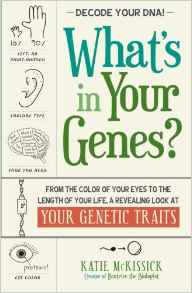
|
|
|
What's in Your Genes
is a wonderful, easy-to-read book written by Katie McKissick, about genes and DNA,
which I highly recommend so that you can easily learn the basics and take some of the "mystery" out of this new "technology".
|
|
|
|
As one reviewer wrote,
|
|
"What’s in Your Genes?
isn’t going to turn you into a genetics expert. Not by a long shot. But if you’re looking for a quick intro to the world of genes and heredity, or know someone who’s intimidated by science, I recommend picking up a copy. It’s a delight. And it’ll put a smile on your face." |
|
|
|
|
|
|
Here are just a few samples and illustrations from the book, so you just how delightful and easy-to-understand she has made it. There's lots of tongue-in-cheek, and you'll find the reading is very fun.
It actually has a lot of practical, helpful information in it. |
|
(Just click on the little arrow at the right in the blue box below, to read the examples.) |
|
Excerpts and Illustrations from What's in Your Genes
|
|
|
|
|
| Base: The part of the DNA that forms the rungs of the double helix ladder. |
|
|
| ... each base has a specific complement, which is not to be confused with bases complimenting each other, which I'm sure they often do, but it has not yet been scientifically verified and published in a reputable journal. I'm still holding out hope, though. |
|
|
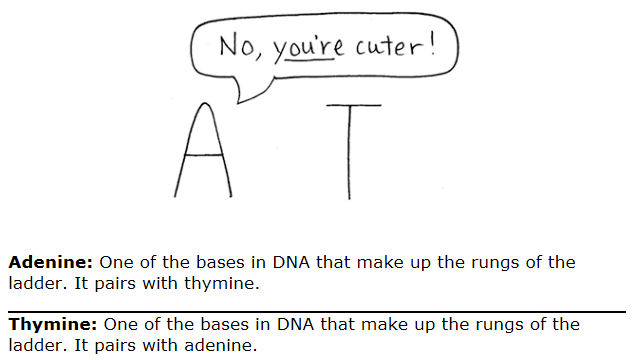
|
|
|
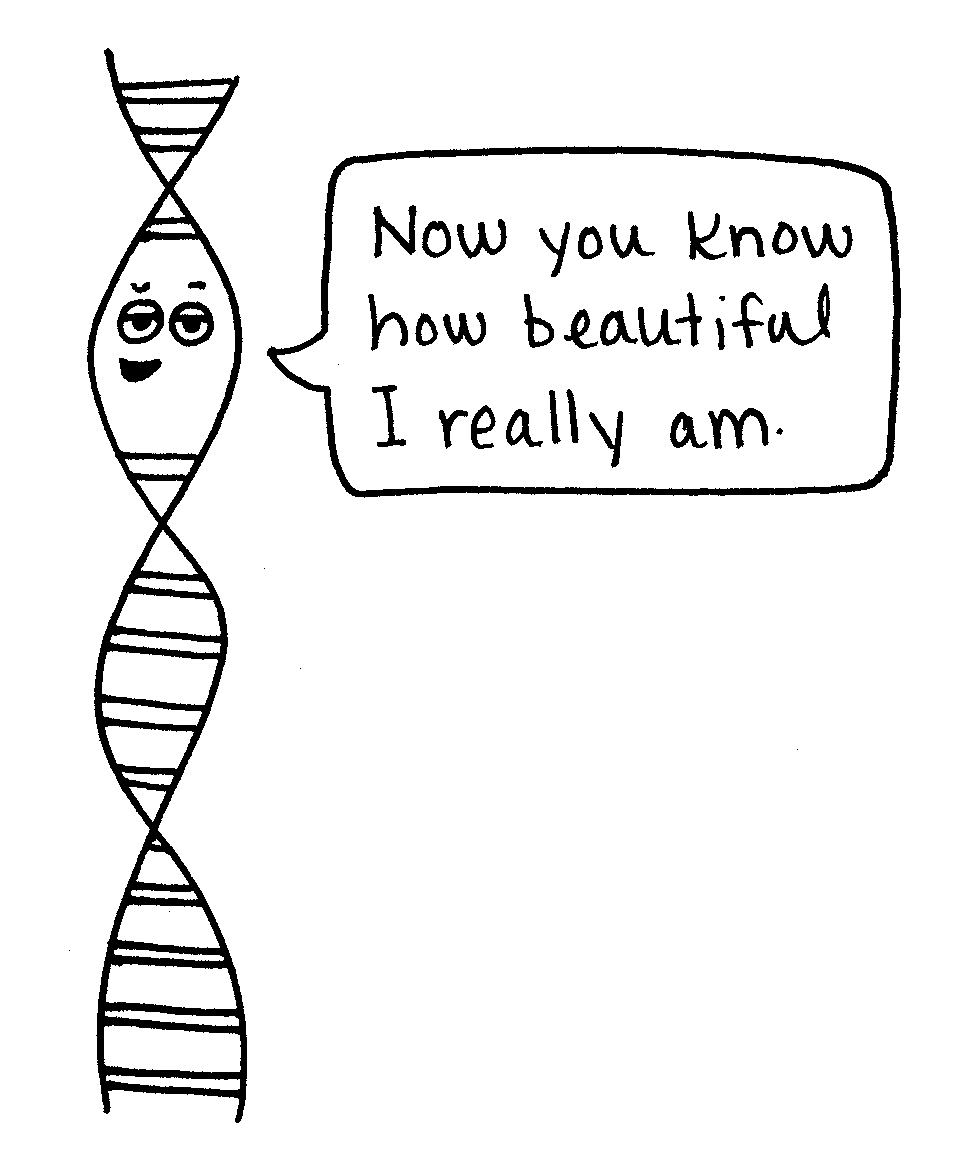
|
[Watson] got a glimpse of a picture taken by Rosalind Franklin using something called X-ray crystallography
...
... so when he saw that picture, it gave him all the information he needed to solve the puzzle of DNA's design. |
|
|
|
|
The mitochondria you have in your cells came completely from your mom, as only the egg has mitochondria.
The sperm doesn't bring any mitochondria to the table, as it would probably weight them down;
in the race to fertilize the egg first, you need to pack light.
|
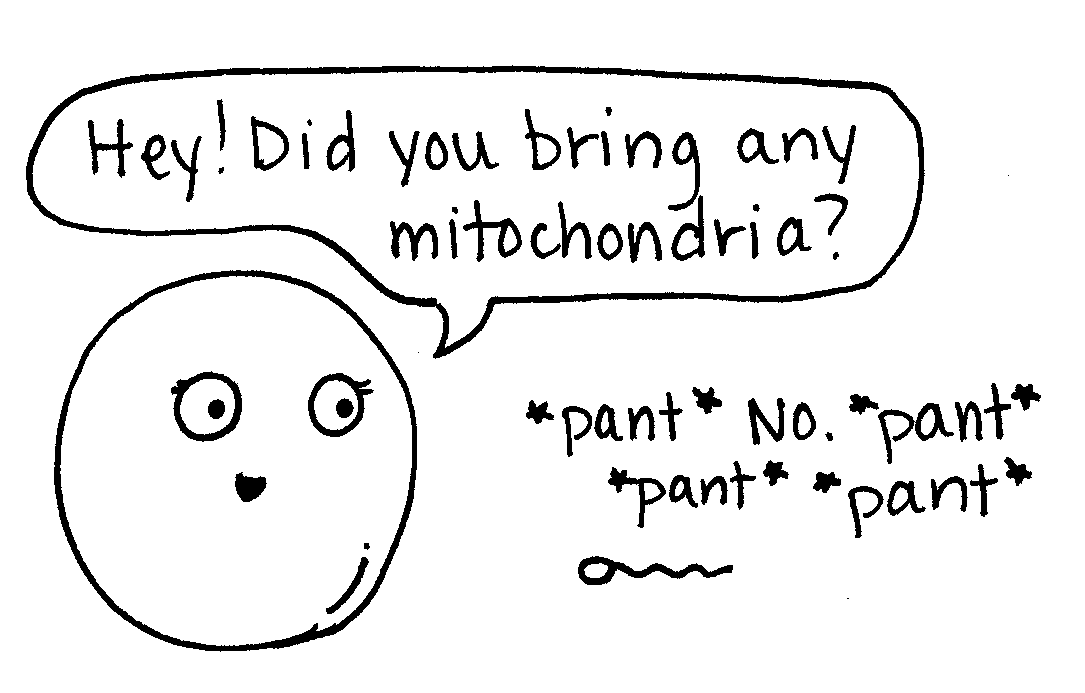
|
|
|
|
|
All Images and excerpts included here are Copyrighted Material.
|
| |
| | | |
|
Serious Reading ... for those who want to know a LOT more
|
|
|
|
The following books are the textbooks that are currently the most accurate (as far as I can tell).
|
|
|
|
The field is also growing so incredibly quickly that these books also tend to be out-of-date before they're ever even published, so I'm waiting for the newer versions to come out!
|
|
|
|
(By the way, the prices that Amazon shows for these are accurate... they are up-to-date,high-quality college-or-university-level-and-beyond textbooks)
|
|
|
| |
Genetics: From Genes to Genomes
| |
| |
|
|
|
|
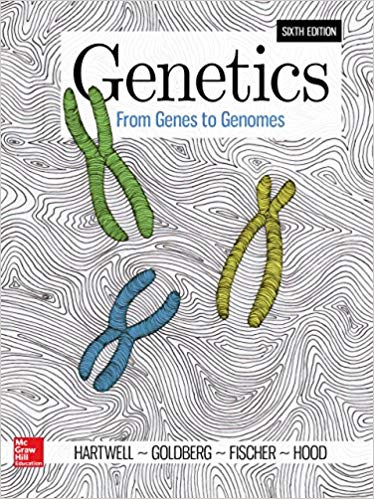
|
|
|
Genetics: From Genes to Genomes, 6th edition, 2017
|
| by Leland H. Hartwell and Michael L. Goldberg |
|
|
|
This book is pretty amazing. If you're up for reading some leading-edge information about "What is DNA?" then this is the book to reach for.
|
| (Please keep in mind the books-go-out-of-date-quickly note, above.) |
|
|
|
"Genetics: From Genes to Genomes is a cutting-edge, introductory genetics text authored by an unparalleled author team, including Nobel Prize winner, Leland Hartwell. The 5th edition continues to build upon the integration of Mendelian and molecular principles, providing [students] with the links between the early understanding of genetics and the new molecular discoveries that have changed the way the field of genetics is viewed." |
|
|
|
|
|
| |
| | | |
| | | |
| |
|
|
|
|
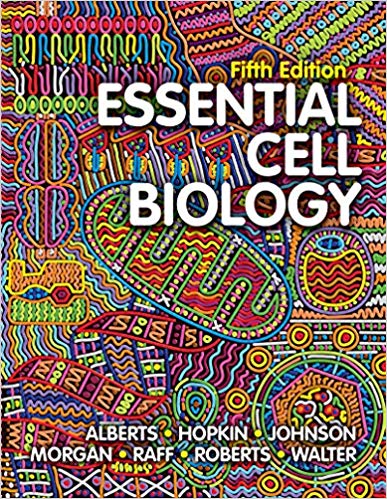
|
|
|
Essential Cell Biology, 5th Edition, 2019 |
| by Bruce Alberts, Karen Hopkin, and more |
|
|
|
This is the "new" version of cell biology. It includes a lot of really great details about DNA, and much more! |
| (Please keep in mind the books-go-out-of-date-quickly note, above.) |
|
|
|
“Essential Cell Biology, fourth edition, provides an up-to-date introduction to the fundamental concepts of cell biology as well as rapidly growing fields such as stem cell biology, development, and cancer....This book is ideal for students taking an introductory cell or molecular biology course, yet is also suitable for individuals looking to simply refresh their understanding of some of the basics of cell biology....Students will gain a broad understanding of biological processes from the latest edition of Essential Cell Biology, which will also help them as they advance to more specialized topics of biology and biomedical research.” |
| ~ Yale Journal of Biology and Medicine |
|
|
|
|
|
| |
| | | |
|
"Food for Thought" Reading ... for some interesting and thought-provoking information
|
|
|
|
The
following books are all by Matt Ridley, and they include a lot of though-provoking, and really interesting material.
|
|
|
For example, how much of "personality" is in the genes? It's a LOT more than you might expect!
Is it all genes, and no nurture then? You'll have to read them, to find out! |
|
|
|
By the way, these books are also well-researched, and highly referenced. He has also written more books, and they are probably the same calibre, and probably get much more interesting. (I'm about to embark on my next one...) |
|
|
| |
Genetics: From Genes to Genomes
| |
| |
|
|
|
|
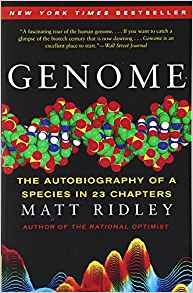
|
|
|
Genome: The Autobiography of a Species in 23 Chapters, 2013
|
| by Matt Ridley |
|
|
"Science writer Matt Ridley has found a way to tell someone else's story without being accused of plagiarism. Genome: The Autobiography of a Species in 23 Chapters delves deep within your body (and, to be fair, Ridley's too) looking for dirt dug up by the Human Genome Project. Each chapter pries one gene out of its chromosome and focuses on its role in our development and adult life, but also goes further, exploring the implications of genetic research and our quickly changing social attitudes toward this information. Genome shies away from the "tedious biochemical middle managers" that only a nerd could love and instead goes for the A-material: genes associated with cancer, intelligence, sex (of course), and more.
Readers unfamiliar with the jargon of genetic research needn't fear; Ridley provides a quick, clear guide to the few words and concepts he must use to translate hard science into English. His writing is informal, relaxed, and playful, guiding the reader so effortlessly through our 23 chromosomes that by the end we wish we had more. He believes that the Human Genome Project will be as world-changing as the splitting of the atom; if so, he is helping us prepare for exciting times--the hope of a cure for cancer contrasts starkly with the horrors of newly empowered eugenicists. Anyone interested in the future of the body should get a head start with the clever, engrossing Genome." |
| ~ Rob Lightner, for Amazon |
|
|
|
|
|
| |
| | | |
| | | |
| |
|
|
|
|
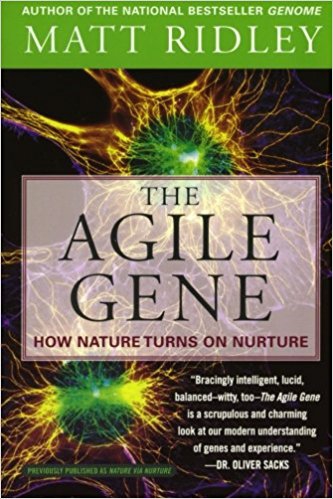
|
|
|
The Agile Gene: How Nature Turns on Nurture, 2012 |
| by Matt Ridley |
|
|
|
"Ridley presents a history of the long debate over genes versus the environment as the dominant influence on human behavior. He asserts that "versus" is wrong. His point of departure is the recent identification of the full sequence of the human genome. "The discovery of how genes actually influence human behaviour, and how human behaviour influences genes, is about to recast the debate entirely. No longer is it nature-versus-nurture, but nature-via-nurture. Genes are designed to take their cues from nurture.... My argument in a nutshell is this: the more we lift the lid on the genome, the more vulnerable to experience genes appear to be." Ridley is a skillful writer who holds the reader's attention all the way." |
| ~ Editors of Scientific American |
|
|
| "Terrific popular science." |
|
|
|
|
|
| |
| | | |
|
|
|